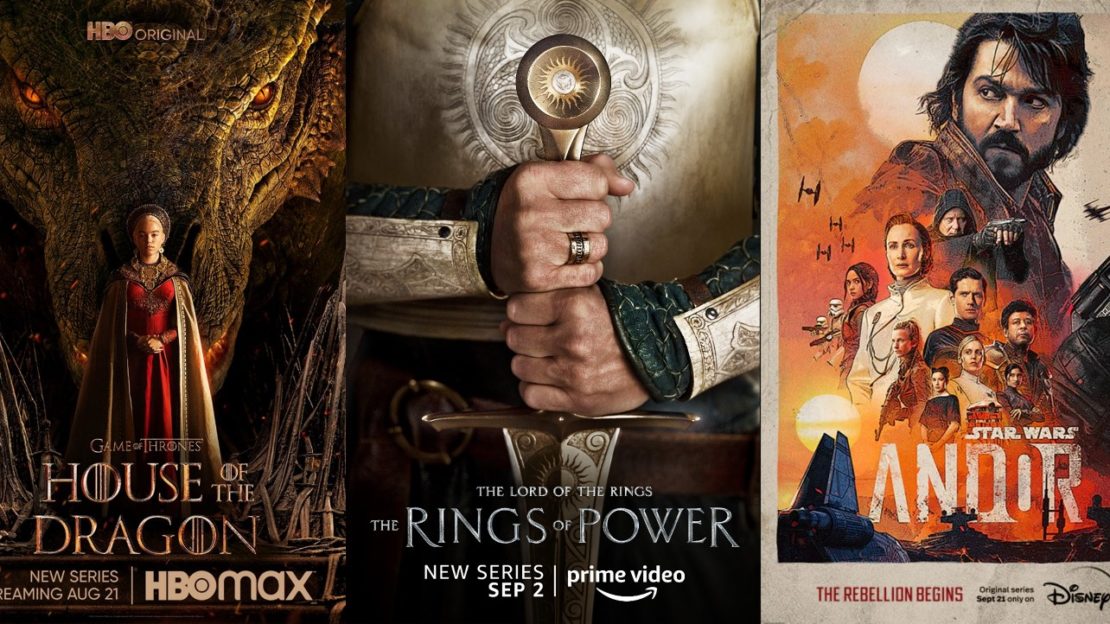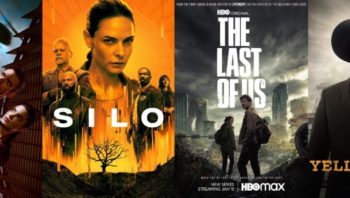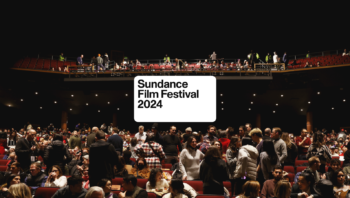August Insights by Cinelytic
Increasing TV Content Budgets: Justified…or Inflated?
The COVID-19 pandemic and subsequent absence of theatrical entertainment resulted in many streaming services pushing their original content budgets to all-time highs in order to accommodate peak home viewing demand and increasing competition. Comcast, Disney and Netflix led the charge that saw budgets surpass US$220b in 2021, with many analysts expecting that value to exceed US$230b in 2022.
As it pertains specifically to the budgets of episodic television series, more and more shows have now joined what was once an exclusive “double digit million” per episode club. This became slightly more normalized via the success of the final few seasons of HBO’s iconic fantasy series GAME OF THRONES, which had budgets that ranged from US$10m to US$15m per episode. Other more recent examples of this include the newest seasons of THE WITCHER and THE CROWN from Netflix, THE MORNING SHOW and SEE from Apple TV+, THE BOYS and THE WHEEL OF TIME from Amazon Prime Video, and WESTWORLD from HBO.
This past summer’s fourth season of STRANGER THINGS, the freshly premiered HOUSE OF THE DRAGON and next month’s THE LORD OF THE RINGS: THE RINGS OF POWER all represent further instances of streamers being more than willing to push budgetary boundaries. Netflix’s groundbreaking science fiction series jumped to an average budget of US$30m per episode, while HBO’s GAME OF THRONES prequel saw an increase in its per episode budget to a reported US$20m. As for Amazon’s 2017’s US$250m rights acquisition, the tech giant remains in a league completely of its own, as the upcoming fantasy series will reportedly cost upwards of a whopping US$60m per episode and total over US$1b over the five seasons of planned production.
Disney of course has also been no stranger to record levels of spending on their new original content. Marvel’s continued expansion in their Phase Four slate has garnered a commitment towards content created specifically for the Disney+ streaming service. Since the beginning of 2021, there have been 8 shows that have premiered on the service with connections to the Marvel Cinematic Universe (MCU). WANDAVISION, THE FALCON AND THE WINTER SOLDIER, LOKI, HAWKEYE and MOON KNIGHT were apparently the most expensive of these productions, all reportedly boasting budgets of US$25m per episode.
Disney’s Dominance
As of late, it is sometimes easy to forget that the MCU is not the only globally consumed cinematic universe that Disney benefits from. The STAR WARS franchise has also provided the company with endless IP and a built in fanbase to create content for on their streaming service. Since the late 2019 success of THE MANDALORIAN, the streamer has released two additional live-action spin-off series: THE BOOK OF BOBA FETT and OBI-WAN KENOBI. While the latter series just recently culminated in June of this year, fans will not have to wait long for more related content, as the upcoming ROGUE ONE prequel series ANDOR is set to premiere late next month. Disney seems to have a set formula when it comes to these storylines, as all four of these shows have reported per episode budgets of US$15m.
With all of the major streamers seemingly becoming more and more willing to allocate the equivalent of feature film budgets to each individual episode of an episodic series, we at Cinelytic decided to provide some brief data that may help our readers better understand whether or not this rapid increase in TV content spending has been justified. We chose to evaluate and compare the streaming performance of the most expensive shows that have been on air since the onset of the pandemic using our proprietary OTT demand data. This data captures 125m daily P2P transactions globally for a yearly total of 35b transactions. For this exercise, we ranked each show against the Top 10 series in release throughout the duration of each subject’s most recent season by their “strongest week” of consumption across global P2P:
As shown in the table above, all but one of the eight Disney+ original series with reported per episode budgets of at least US$15m dominated their respective competitive sets during their most recent seasons and captured the most market share, with HAWKEYE being the only high performing title that didn’t end up in first place. In fact, while being the worst performing of the Disney+ series, HAWKEYE still managed to capture more market share than seven of the nine other highlighted shows from competing streaming platforms. HBO’s final season of GAME OF THRONES and Netflix’s most recent installment of STRANGER THINGS were the only titles that captured more market share than any of the MCU or STAR WARS spin-offs.
As for the remaining titles, both of Amazon Prime Video’s current high budget endeavors, Apple TV+’s SEE, HBO’s WESTWORLD and Netflix’s THE WITCHER all managed to crack the Top 10, while THE MORNING SHOW and THE CROWN were the worst performing titles and failed to capture any of the top performer market share.
What Does This Mean For Subscribers?
The continued success of STRANGER THINGS helped ensure Netflix’s claim as the king of streaming with an end of Q2 reported global paid subscriber count of 220.7m, while Disney+ ended fiscal Q3 with 152.1m overall streaming subscribers, experiencing an impressive addition of 14.4m subs. HBO, HBOMax and Discovery+ as a combined services manages 92.1m subscribers as of Q2 2022, up 1.7m from the previous quarter. Amazon Prime Video and Apple TV+ have yet to release any verified information regarding subscriber growth in 2022.
On the surface, three of these streaming platforms represent two differing approaches as it pertains to assigning record breaking budgets to their original content. Netflix has long been seen as the company most willing to spend whatever it takes to provide a giant library of large-scale popular films and series. On the other hand, HBOMax and Disney+ seem to focus their highest levels of spending on shows related to established IP that they know viewers are hungry for, i.e. GAME OF THRONES, STAR WARS and the MCU. While HBOMax has once again found success with this methodology as the HOUSE OF THE DRAGON debut became the largest original series premiere in the streamer’s history, it has become increasingly evident that Disney+ has a lot more of this type of proven content at its disposal.
As for the big tech companies, Amazon Prime Video has seemingly fared better on its big budget shows with less reported spending than Apple TV+. Now, in an attempt to truly compete with the likes of Disney, HBO and Netflix, Amazon is taking a massive swing with THE LORD OF THE RINGS and a per episode budget of US$60m that is stratospherically higher than other streamers. That being said, the tech giant has more money to spare than almost all of its competitors, and we will have to wait until next month to see if the endeavor proves to be worth it.



